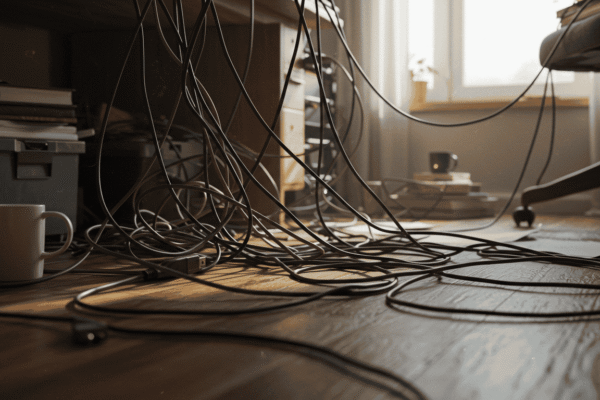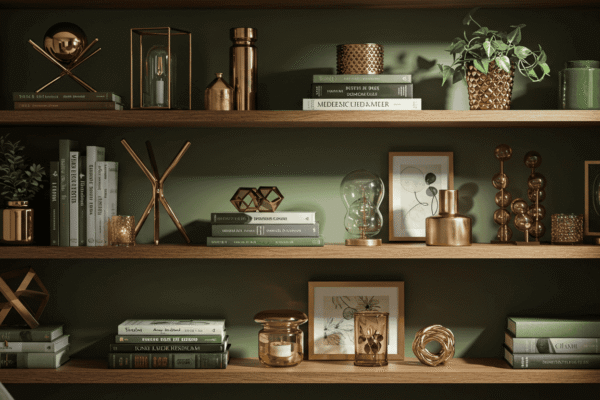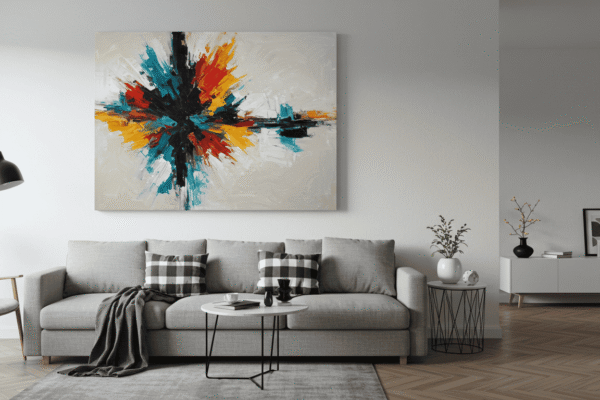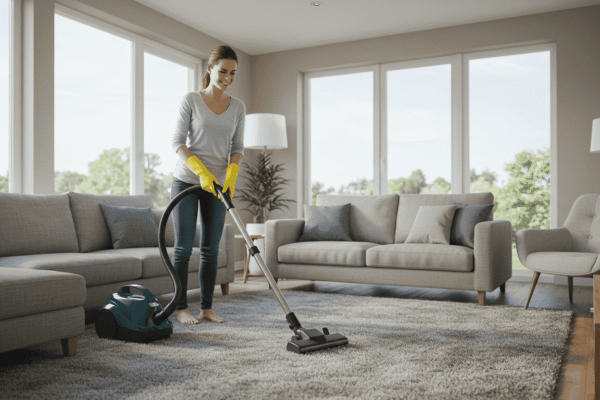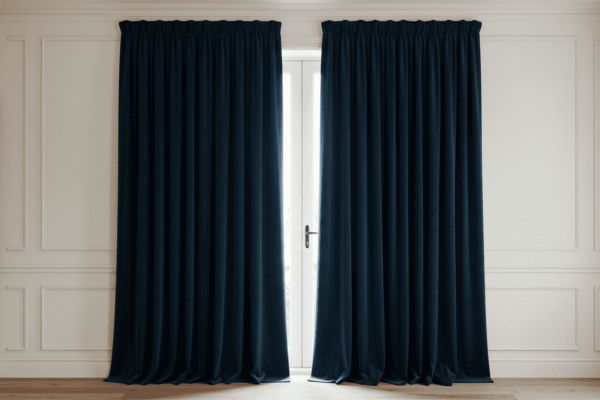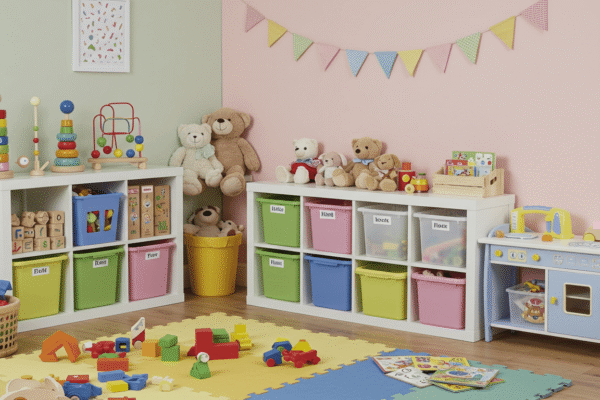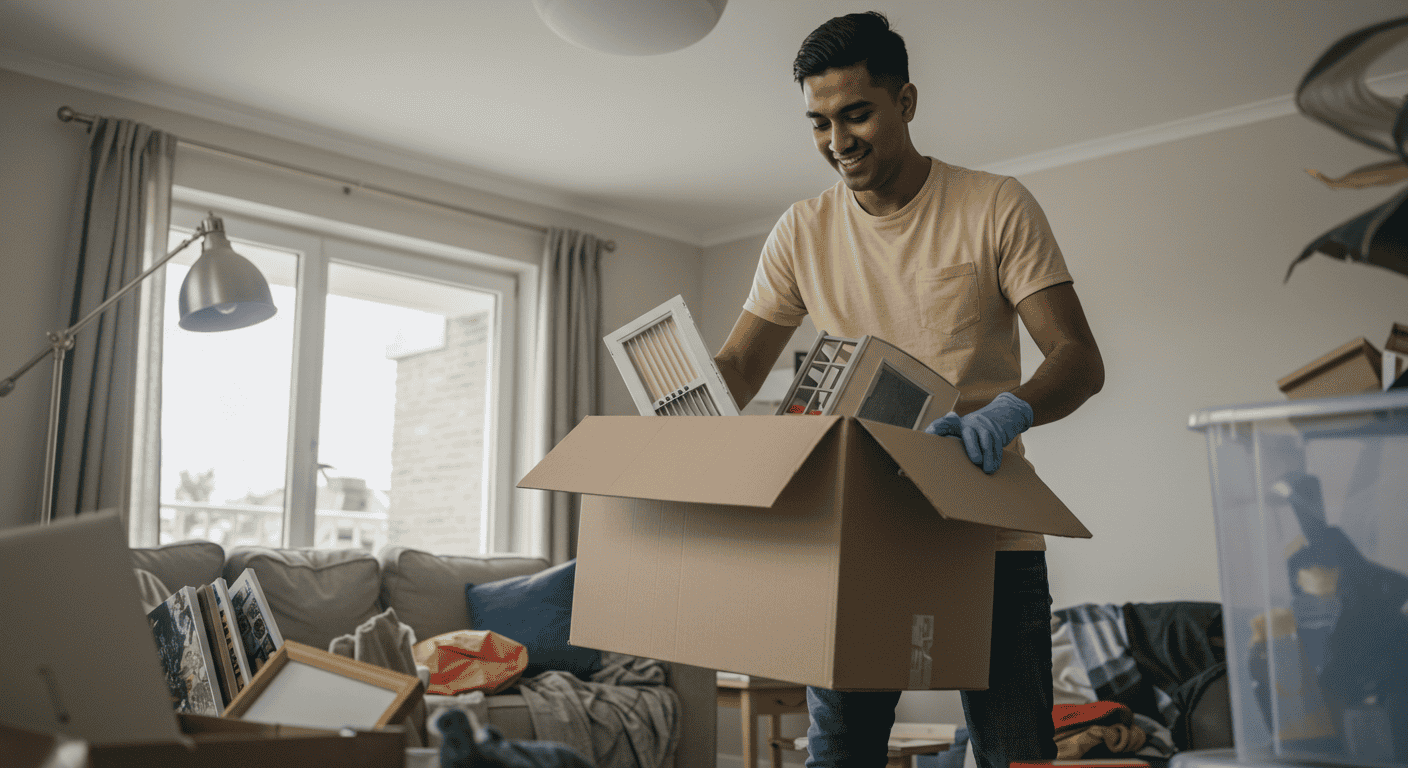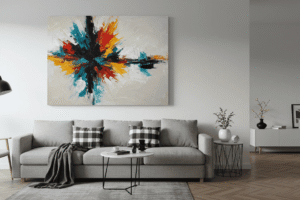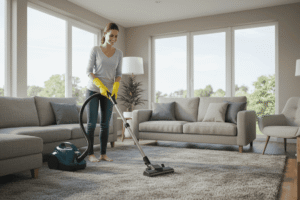In our fast-paced consumer-driven society, clutter has infiltrated every part of our lives. Our homes overflow with objects, our offices collapse under messy desks, and our digital worlds are clogged with endless notifications. The link between environment and human psychology is stronger than most realize. Clutter does not simply occupy space — it occupies mental bandwidth. Exploring The Psychology of Tidying reveals that the act of tidying is not merely cosmetic; it is transformative at the neurological, emotional, social, and even spiritual levels. By embracing minimalism, we free ourselves from overwhelm, sharpen our focus, and rediscover happiness in the essentials. This long-form guide unpacks how tidying reshapes the brain and psyche, backed by science, cultural traditions, and real-life practices.
The Psychology of Tidying and the Human Mind
The human brain is an information-processing system that thrives on clarity. When environments are crowded, the brain works harder to filter through competing stimuli, often leading to cognitive overload. Within The Psychology of Tidying, clutter is seen as more than disorder; it is a hidden drain on attention, memory, and problem-solving capacity.
Why Clutter Creates Mental Overload
Psychologists call this the “stimulus overload effect.” Every book on the floor, stack of papers, or notification ping registers in the subconscious. Even if ignored consciously, the brain has to allocate resources to process and suppress the input. Over time, this results in irritability, fatigue, and decreased willpower. A Princeton Neuroscience Institute study confirmed that visual clutter directly interferes with the brain’s ability to focus and perform efficiently. This proves that The Psychology of Tidying explains not only why clutter is stressful but also why order enhances cognition.
The Science Behind Clutter and Stress
Biologically, cluttered spaces cause elevated cortisol production, as shown in UCLA’s study of middle-class households. Cortisol, the stress hormone, is designed to respond to threats. But when environments consistently signal disorder, the body stays in low-level alert mode, leading to chronic stress, insomnia, and poor emotional regulation. A tidy space signals safety and relief to the brain. Thus, tidying is not superficial—it is a physiological intervention, validating the insights of The Psychology of Tidying.
Minimalism as a Tool for Focus

Minimalism goes a step beyond tidying by teaching us to curate intentionally. Minimalist principles emphasize owning and engaging with fewer items, but ensuring they are meaningful and functional. In The Psychology of Tidying, minimalism is framed as an essential tool for channeling focus and directing energy toward meaningful goals.
The Connection Between Simplicity and Cognitive Clarity
Researchers in attention economics found that too many environmental options cause “decision fatigue.” Every mug on a desk, every pair of shoes to choose from, or every file on a desktop becomes another micro-decision. Minimalism eliminates redundant choices and restores clarity. For instance, author Marie Kondo’s approach encourages keeping only objects that “spark joy.” This principle resonates with The Psychology of Tidying because it reduces cognitive noise.
Practical Examples of Minimalist Focus
Minimalism in practice can mean: a writer keeping only essential reference books on a shelf, a student organizing digital notes into three core folders instead of twenty, or a family reducing kitchenware to everyday essentials. Each act removes unnecessary decisions. The outcome is deeper concentration. This demonstrates why organizations like Google and Apple design minimalist workspaces and offices to encourage innovative thinking, aligned with The Psychology of Tidying.
Tidying and Emotional Well-being
Beyond mental clarity, tidying has profound effects on emotional stability and mood. The state of our outer environment often mirrors our inner emotional worlds. A messy house can indicate or amplify feelings of overwhelm, while a tidy room fosters calm and hope. The Psychology of Tidying views tidying as a pathway toward emotional regulation and wellness.
The Role of Control in Emotional Health
A significant factor in emotional health is perceived control. Clutter can make individuals feel out of control, as if their lives are dictated by chaos. Through tidying, people regain a sense of mastery over their circumstances. Research consistently finds that those who reorganize living spaces often feel stronger self-efficacy. The Psychology of Tidying reframes cleaning into empowerment—each shelf sorted is a reminder of regained agency.
Tidying as Therapy
Therapists often recommend tidying to patients with anxiety or depression. Small organization tasks provide structure and accomplishment. In Japan, the act is sometimes referred to as “Danshari,” meaning decluttering life to find freedom. Studies show that engaging in tidying rituals reduces symptoms related to anxiety and rumination. Patients describe tidying as cathartic—a process of external cleansing that mirrors internal healing. This therapeutic effect is central to The Psychology of Tidying.
The Link Between Minimalism and Happiness
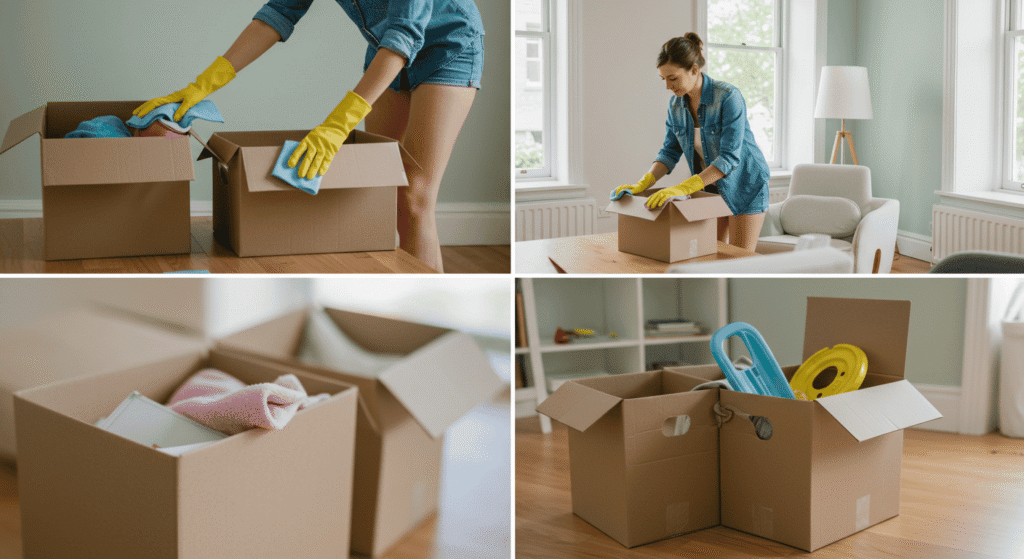
Minimalism shifts perspective from “having more” to “being more.” By stripping away excess, we get closer to values, relationships, and passions. Happiness research reveals that material wealth beyond basic needs does not increase satisfaction. Instead, happiness is deeply tied to meaning, autonomy, and connectedness. The Psychology of Tidying aligns minimalism and happiness through purposeful living.
The Happiness Derived from Letting Go
Possessions often bind us emotionally. Old clothes may remind us of past failures, gifts may carry guilt, and unused gadgets evoke waste. Releasing these items frees us not just physically but emotionally. Psychologist Robert Emmons, a leader in positive psychology, emphasizes gratitude over acquisition in cultivating joy. Decluttering naturally fosters gratitude for what remains. The Psychology of Tidying teaches that letting go is not loss but liberation toward happiness.
Minimalist Lifestyles and Long-term Fulfillment
Individuals who embrace minimalism report long-term fulfillment, not boredom. By consuming less, they experience more freedom, improved finances, and strengthened relationships. Surveys of minimalist communities worldwide show consistent increases in contentment and life satisfaction. Long-term minimalist practice promotes sustainable joy—surpassing the fleeting satisfaction of consumption—and echoes the principles of The Psychology of Tidying.
Tidying and Productivity

Productivity extends beyond willpower; it is a byproduct of environment. Disorganization undermines workflow and creativity. Organized systems allow energy to be directed where it matters most. The Psychology of Tidying establishes tidying as an unspoken productivity hack.
The Productivity Gains from Decluttering
According to the National Association of Professional Organizers, workers waste one hour per day looking for misplaced documents. This amounts to 250 hours per year—more than six full work weeks. Eliminating clutter frees this wasted time. Companies investing in office organization see measurable rises in focus and efficiency. The US Navy even implemented “5S methodology” (a Japanese workplace-organization system) aboard ships to boost productivity and safety. These real-world examples prove The Psychology of Tidying in action.
Productivity Habits That Begin with Spaces
Practical habits include: daily resets where desks are cleared before leaving work, adopting digital minimalism by unsubscribing to unnecessary emails, labeling storage so retrieval is immediate, and reducing multitasking tools that compete for mental space. Each habit, however minor, prevents distraction creep. The psychological payoff, as explained by The Psychology of Tidying, is consistent, energizing productivity.
Tidying as a Mindful Practice
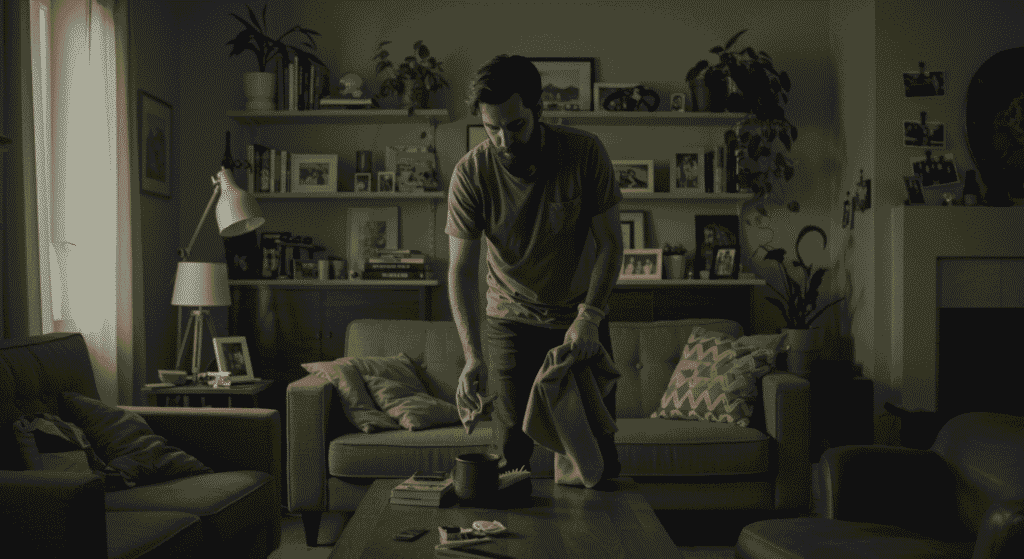
Tidying can double as mindfulness, bringing awareness into everyday actions. Instead of rushing, slowing down to tidy carefully immerses us in the present moment. Many spiritual traditions integrate household order with ritual practice. The Psychology of Tidying recognizes tidying as meditation in motion.
Conscious Tidying and Mental Presence
Conscious tidying is about awareness: feeling textures while folding clothes, hearing the sound of water while washing dishes, or appreciating the alignment of books on a shelf. These sensory details anchor us in the now. Neuroscientists show that mindful practices calm the amygdala, reducing fear and stress. This is why many people report feeling refreshed after simple cleaning sessions. The Psychology of Tidying embodies this mindful connection.
Minimalism Meets Mindfulness
Minimalism serves as the foundation of mindful living. With fewer distractions in physical space, the mind is freer to rest in the present. A minimalist home enhances mindful practices like meditation, journaling, or yoga. The synergy of minimalism and mindful tidying strengthens personal growth and tranquility, confirming the integrative power of The Psychology of Tidying.
The Social and Relationship Benefits of Tidying
Clutter is rarely a private issue; it manifests in shared environments. Family stress often arises from disagreements about cleaning responsibilities or mess. Couples argue over cluttered bedrooms, children clash with parents over toys, and roommates dispute chores. The Psychology of Tidying broadens tidy principles to include social well-being.
How Shared Spaces Influence Relationships
Shared spaces act as emotional barometers. Researchers found that couples who described their homes as cluttered had higher levels of daily frustration. Conversely, those who tidy together report stronger relational satisfaction. In families, tidying teaches responsibility and teamwork. Instead of being burdensome, shared tidying can become ritual—like cleaning together on weekends—strengthening connection. Thus The Psychology of Tidying fosters harmony, not just cleanliness.
Minimalism as Shared Lifestyle
Minimalism furthers relational bonding by aligning values. Families that decide together what possessions to keep and what to discard create dialogue and mutual support. Parents adopting minimalism often find children demand fewer toys, focusing instead on creative play. Couples report less financial stress when adopting minimalist purchasing habits. The shared lifestyle demonstrates how The Psychology of Tidying nurtures collective happiness and cooperation.
Integrating Tidying Into Daily Life
For tidying to truly reshape life, it must become habit. A single weekend declutter is a start but not enough. Integration means embedding the principles of The Psychology of Tidying into routines so that tidiness is maintained effortlessly.
Building Sustainable Tidying Routines
Effective tidying routines are small but consistent: a two-minute rule where anything that takes under two minutes (like hanging a coat) is done immediately; the habit of putting items back in their “home” after use; or a nightly reset that clears main living spaces. Studies show habits work better when tied to triggers, such as making the bed right after waking. These routines prove that The Psychology of Tidying succeeds by turning strategy into habit.
Long-Term Transformation Through Minimalism
Sustained transformation requires reducing incoming clutter. Minimalism acts as preventative medicine. A family adopting a “one-in, one-out” rule (if one item is purchased, one is removed) naturally avoids accumulation. Digital minimalism—such as unsubscribing from newsletters—prevents information overload. Over time, minimalism makes tidiness the norm, not the exception, embedding The Psychology of Tidying as lifestyle identity.
Conclusion: The Lasting Power of Tidying
The Psychology of Tidying illuminates why decluttering is far more than household management. It is psychology in action, influencing stress, focus, emotions, productivity, mindfulness, and relationships. Minimalism sharpens this practice into a philosophy of intentional living. At its core, tidying is about reclaiming peace from chaos and emphasizing what matters most. By embracing tidying and minimalism together, we design environments that not only look better but make us feel better. For more practical lifestyle strategies, visit my blog. To explore in-depth scientific studies on clutter and psychology, read further at Psychology Today.

